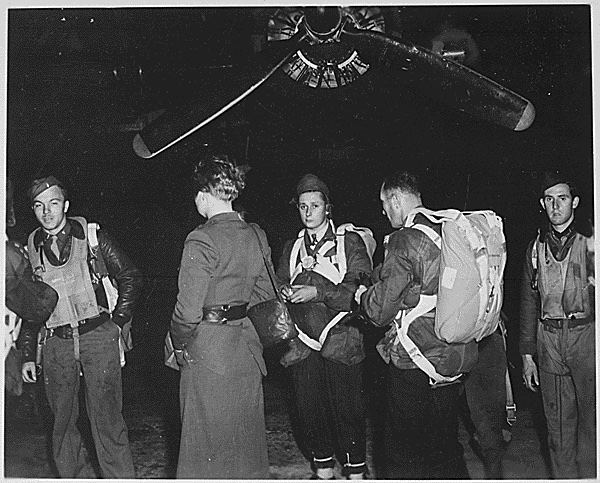On a recent afternoon, a dressmaker named Sergio Guadarrama rummaged through a pile of fabric. He and his partner had converted the living room of their home, in Hudson, New York, into a bridal atelier. Rolls of satin were stacked under a worktable; a mannequin in a strapless gown made of Chantilly lace stood near an armoire. Scattered around were five sewing machines and hundreds of yards of organic linen, greige hemp canvas, ombré silk brocade, and all manner of other textiles. Guadarrama had the look of a man at ease—leather slippers, a loose denim shirt, and a big, bright smile—though his eyes betrayed a hint of exhaustion. After a few minutes, he found what he was searching for and held it up: a swatch of vintage flower-printed silk voile from Christian Dior. “This one is to die for!” he said.
The Dior fabric would be sewn into a custom wedding dress for a twenty-five-year-old bride-to-be, Keelie Verbeek, who had just driven down from New Hampshire. Verbeek arrived at Guadarrama’s house with her sister, her mother, two pairs of high heels, and her mother’s wedding gown (bespoke, purchased at a bridal shop in Cicero, New York, in the eighties), which she wanted to incorporate into her own dress, somehow. Guadarrama suggested that he could remove tiny pearls from the old gown’s surface and sew them onto the new one. “I can kind of sprinkle them in,” he said. Verbeek nervously glanced at her mother, who shrugged. Then she disappeared into Guadarrama’s bathroom for her first fitting, with a prototype made from cotton muslin. Kade Johnson, Guadarrama’s business partner and fiancé, cautioned, “We had to leave the toilet seat up, because the cat pees in the toilet here.”
A few minutes later, the bride emerged. Guadarrama eyed her up and down, took some measurements, made a few quick alterations, and then began to pepper her with questions about her bra. The dress, which cost nearly thirteen thousand dollars—typical for a couture bridal gown—would require six fittings in all.
As Verbeek changed back into her street clothes, the conversation turned to other elements of the wedding, which was going to be held, in eleven months, at the former estate of the sculptor Daniel Chester French, in the Berkshires. The reception would feature biodegradable confetti, small-batch Albanian olive oil, and, as Verbeek put it, “emotional-support chocolate.” Although she had already picked most of her wedding venders, including a celebrity makeup artist—recommended by Guadarrama—and a hairdresser from Maryland, she still needed a florist and a photographer, she said, and had been browsing the Knot, a popular wedding-planning platform. In addition to hosting gift registries and wedding websites, and offering reception ideas and relationship advice (“What to Know About Walmart Wedding Cakes,” “How to Prepare for Sex on Your Wedding Night,” “Dislike Your Spouse’s Last Name? Here’s What to Do”), the Knot is used by millions of couples to find their wedding venders, who pay to advertise on it. When Verbeek mentioned the Knot, Guadarrama shook his head and frowned.
“Should I not do that?” Verbeek asked.
“They’re doing some baaaad, shady stuff behind the scenes,” Guadarrama said. He started to explain, but the bride told him that she was running late for her next appointment, at the venue. She needed to decide whether to order custom floating lily pads for the fish pond, and to review where the turreted sailcloth tent and dance floor would be constructed.
After the bridal party left, Guadarrama and Johnson sat down at their dining table and told me that before coming to Hudson they had run an atelier in Manhattan. “We were having success after success after success,” Guadarrama said. They had dressed Kesha, JoJo, Tiffany Haddish. For the 2019 Tony Awards, they made Billy Porter a velvet Elizabethan gown from actual Broadway stage curtains. After a financial setback, the couple decided to move upstate and begin again—right as the pandemic all but shut down the bridal industry. Business tanked. On a chilly winter day in 2022, a saleswoman from the Knot called Guadarrama, in response to a form he’d filled out online. If he signed up for a premium advertising package, the saleswoman said, he could expect between eighty and two hundred and forty brides to contact him each month. Johnson thought this sounded implausible, but, despite his misgivings, the couple signed a yearlong advertising contract with the Knot, for five thousand eight hundred dollars. “We were looking at the Knot as a beacon of hope,” Johnson told me. “And it was the complete opposite.”
Guadarrama said, “The Knot was, like, the final nail in the coffin.”
Couples who are getting married tend to hear the same advice over and over: “Get good at forgiveness.” “Learn the wisdom of compromise.” “Don’t forget to chill the champagne.” When it comes to the wedding itself, the National Association of Wedding Professionals insists that every reception is better with balloons. The Association of Bridal Consultants recommends stocking extra toilet paper, just in case. If you want a quick cure for a rehearsal-dinner hangover, you can hire registered nurses to arrive with the hair and makeup professionals, carrying I.V. bags infused with vitamins or anti-nausea medicine. Cold feet? A man from Spain might be available to crash your wedding. (Going rate: five hundred euros.) “I’ll show up at the ceremony, claim to be the love of your life, and we’ll leave hand in hand,” he told a Spanish TV station. Marcy Blum, a wedding planner who has orchestrated celebrations for LeBron James, members of the Rockefeller family, Bill Gates’s oldest daughter, and, once, a woman who demanded that no other brides be present in the same Italian town on the day of her ceremony, told me, “I will spend whatever it takes of my client’s money to make sure there’s enough bartenders before I’ll put a flower on the table.”
Each year, Americans drop roughly seventy billion dollars hosting weddings. Most people think that this is too much—that couples are overspending, that venders are overcharging, and that the wedding-industrial complex verges on unethical. After all, many weddings are excessive and wasteful. (In New York City, the average cost is eighty-eight thousand dollars.) The wedding planner Colin Cowie, whose clients range from Tiësto (“Happily married,” Cowie boasted) to Jennifer Lopez and Ben Affleck (“I get them down the aisle fabulously, but they’re on their own thereafter”), told me that he hires hundreds of venders for every event: invitation managers, shoe-check attendants, babysitters, ice carvers, drone operators, and caviar servers. “Once, we built a church,” he said.
Even more modest affairs can involve a phalanx of venders; the average number brought on per wedding is fourteen. These small-business owners often begin as amateurs pursuing a side gig: students moonlighting as wedding photographers, cashiers doing calligraphy after work. Typically, surges of new venders follow layoffs in corporate America. “People cash in their 401(k)s, and they start a business,” Marc McIntosh, a wedding guru who regularly speaks at conferences like WeddingMBA, told me. “A lot of people go into this industry because they’re good at something—they bake good cakes, and their family says, ‘You should go into the wedding-cake business!’ ” But being good at something doesn’t mean you’re good at running a business. And running a wedding business is especially tough: there are hundreds of thousands of competitors; costs are rising, owing in part to inflation; and, for many venders, bookings and budgets have decreased by about twenty-five per cent. According to a recent industry survey, a third of all wedding venders said that they are doing poorer financially than they were a year ago. “Florists are the worst,” McIntosh said. “There are so many broke florists.”
A reliable way for a florist to avoid going broke used to be by advertising in glossy magazines like Brides or Martha Stewart Weddings. By the early two-thousands, wedding marketing, like everything else, was increasingly shifting online. When Blum started her planning business, in Manhattan, in 1987, she took out a small ad in New York. Ten years later, she had become the city’s unofficial wedding czar, and four friends who’d met at N.Y.U.’s film school approached her for advice. “They were, like, ‘We’re going to start this website about weddings,’ ” Blum recalled. “And I said, ‘That’s the cutest thing that I’ve ever heard. Let me introduce you to everybody.’ ” The website was the Knot, and the four friends created it with about one and a half million dollars in seed funding from AOL. “In those days, it was a joke,” Blum said.
Within a few years, the Knot was a juggernaut—the Yellow Pages of the wedding industry. By 1999, when it went public, two of the company’s co-founders, Carley Roney and David Liu, who are married, had become veritable wedding moguls. The couple starred in a reality show about wedding planning, launched a magazine, and purchased weddingchannel.com, an online bridal registry. Roney appeared regularly on “The Oprah Winfrey Show” and “The View.” In an episode during Season 2 of “The Apprentice,” contestants raced to open a bridal shop and sell wedding dresses. One team spent its entire marketing budget with the Knot—and won. “Our phone went off the hook after that,” Liu told me. “I’m almost ashamed, but, like, some of our success has to be attributed to idiot Trump and that show.”
In 2018, XO Group, the Knot’s corporate parent, was acquired by its biggest competitor, a company called WeddingWire, in a private-equity-backed deal worth almost a billion dollars. By then, Roney and Liu were out. The Knot Worldwide became a privately held company.
Last year, the Knot facilitated four billion dollars in consumer spending via advertising on its platforms. Most of the company’s revenue comes not from brides and grooms but from wedding venders. Nine hundred thousand venders in more than ten countries use the Knot, and many pay to be advertised to couples—“leads,” in industry parlance—seeking their services. Ronnie Rothstein, who, at eighty-two years old, is the C.E.O. of Kleinfeld Bridal, one of the largest wedding-dress retailers in America and a mainstay on the reality show “Say Yes to the Dress,” told me, “Every wedding vender needs a qualified lead.” He went on, “Most of these businesses are family businesses, and they need help to get as many people into the door as possible.”
After Guadarrama signed his advertising contract with the Knot, he started receiving a flood of inquiries from couples. Many of the messages seemed bland or formulaic. “Hello—we are getting married,” one groom wrote. A bride asked, “Could you send over some more info about the products and services you offer?” Guadarrama always responded immediately, and repeatedly followed up. At first, he was optimistic. But, week after week, he never heard anything in return.
Curious to learn more about the vender experience, and being a weekend cake baker myself, I decided to fill out a vender contact form on the Knot’s website to get some basic information about the contract terms. A Knot representative soon called me. She was encouraging about the brides and grooms who would be spending money on my fictitious wedding operation. “People do go over budget sixty-two per cent in your particular area,” she said. After a long discussion about pricing and placement, she said that, if I wanted to take my business to the next level, a twelve-hundred-dollar-per-month advertising package might be appropriate. (Later, the Knot characterized this call as an attempt to “entrap and bait our salesperson” and accused me of being “ethically challenged.”) I also spoke at length with dozens of wedding venders across the United States. David Sachs, a wedding photographer in Northern California, started advertising with the Knot in 2016, after giving up on becoming an actor. “The Knot was the biggest directory at the time, so I figured I would just do what everyone else was doing,” Sachs told me. Initially, he got some clients from the site. “Sales were higher than expenses, and that was good enough for me,” he said. But after a few years brides stopped reaching out, and he called his sales rep to complain. A new, pushier rep talked him out of closing his account and persuaded him to upgrade to the most expensive advertising tier. “I started spending a thousand dollars a month,” he told me. Then a torrent of leads arrived, via the Knot’s online vender portal. Often, he’d talk to the potential customers by phone. “It felt like all the brides were reading from a script,” he said. “I could hear other calls in the background, and they all had the same lilting tone. That’s when I realized, they have a literal phone bank of people who are faking leads.”
When I asked the Knot about this, a spokeswoman said, “We do not tolerate fraudulent practices.” She went on, “The Knot Worldwide does not employ any individuals or teams who act as fake couples to send fake leads to venders. We have no financial incentive to engage in such conduct, and it is antithetical to our business.” But more than twenty wedding venders who advertise with the Knot told me that they’ve received inquiries from what they believe are fake brides. Matt Pierce, a wedding photographer in Texas, said that he’d exchanged e-mails with someone who was getting married in a few days. Pierce called the wedding venue, he told me, and the woman who ran it said, “You, too, huh? You’re about the twelfth photographer that’s called here today about a wedding this weekend.” There was no wedding.
Documents I obtained from the Federal Trade Commission reflect that, since 2018, more than two hundred formal complaints have been made about allegedly fraudulent activity on the Knot and WeddingWire. One vender wrote, “I paid around $12,000 and got absolutely nothing to show for it.” Another said, “My business is on the verge of going bankrupt. I would happily pay for the service [if] it was providing me what was promised, but it has not.”
Venders have also shared their grievances on several private Facebook groups, one of which features a stock photo of an enraged bride wielding a pistol. (Sample posts: “Hi! New victim here!”; “I’m in a war with the Knot”; “Can we get together for a class-action lawsuit?”; and “You know what would be more powerful than a lawsuit? A Netflix documentary . . .”) Venders in the group suspected infiltration by Knot employees. A post read, “We found two spies here who worked for The Knot. They know about us. And, they should be scared.” A couple of years ago, an online petition was launched in an effort to spur regulatory action. “This petition is going to congressional leaders,” the organizer wrote. Comments from signatories include:
Mike Cassara, a wedding photographer, influencer, and podcast host, told me that he and his co-host, Lauren O’Brien, regularly receive D.M.s on Instagram from wedding venders who complain about “fake brides” and “bad leads” from the Knot. He told me, “Their stories are endless! If this was five people, I’d question it. If it was ten people, twenty people, even a hundred people, I’d question it. But we’ve had thousands of people saying the same thing: ‘They’re ripping me off.’ ”
As I was reporting this story, the Knot had multiple outside communication firms correspond with me. One of them got in touch through a representative who had a résumé that included “successful presidential pardons” and “hostage and kidnapping recovery.” In the past six months, I contacted more than seventy current and former employees of the Knot, because I wanted to better understand the wedding venders’ claims. Almost all who agreed to speak with me requested anonymity, citing N.D.A.s or fear of retaliation. One former saleswoman said that, after her venders had complained to her about lead troubles, she recognized that many of the leads seemed like they might be fake. But she was working on commission, and it wasn’t in her interest to let clients out of their annual contracts; if she lost too many, she might lose her own job. Bretta Thompson, an Indianapolis-based wedding planner and officiant who advertised on the site, told me, “It was like pulling teeth to get anyone at the Knot to contact me. It would take weeks to get a response back, via e-mail, and then it was always my fault.” Another former saleswoman put it more plainly: “We fucked over venders.” (“We strongly dispute these claims,” the spokeswoman for the Knot said.)
Many venders I spoke with told me variations of the “fake brides” story, and took it upon themselves to conduct investigations, which produced results that were sometimes difficult to verify. Nicole Hobbs, who worked as a wedding photographer in Nashville, said that she had been contacted by people who, upon further inquiry, had already exchanged vows. “I was even able to confirm that one of the ‘grooms’ was actually a married minister in a different state,” she claimed. Darryl Cameron II, a part-time d.j. in Cleveland, Ohio, said that he’d received dozens of fake leads from the Knot. “These folks are real,” he told me. “But I’ve looked several up in the county database, and they’re married already!” Jeffrey Caddell, who owns a wedding venue in Alabama, told me, “All I can say is, it’s very fishy when you have hundreds and hundreds of leads and only a handful of responses.”
In David Mamet’s play “Glengarry Glen Ross,” a beleaguered real-estate salesman explains that he isn’t closing deals because his boss has been giving him bad leads. “I’m getting garbage,” he says. “You’re giving it to me, and what I’m saying is, it’s fucked.” Most leads for most venders in most industries don’t ever amount to anything—it’s hard work chasing down a lead, as any salesperson will attest—and the wedding industry is particularly challenging. Brides are regarded by wedding professionals as fickle and elusive. Marc McIntosh, the wedding guru, told me, “A couple planning a wedding has a to-do list, and everything on that list is something they’ve never bought before, from a company they’ve never heard of before. And they don’t have a lot of time.” Ronnie Rothstein, of Kleinfeld Bridal, said, “When a girl gets engaged, she’s gonna talk to everyone.”
Not every wedding vender hates the Knot. Allison Shapiro Winterton, a wedding-cake baker, considers it a “very honest business.” Steven Burchard, a d.j. and magician who runs a nationwide entertainment company, said that during engagement season—between Thanksgiving and Valentine’s Day—he usually receives about a dozen leads a week from the Knot. He follows up with each of them numerous times, and many do end up booking him. “You’ve gotta remember, there are tire kickers,” he told me. “Is that a fake lead? Or is it just someone who isn’t interested?”
Jeff MacGurn, who owns a wedding venue in the San Jacinto Mountains, told me, “The Knot’s great! And I’m uniquely positioned to comment on that.” In addition to operating the venue, MacGurn works for a digital-marketing firm. “When I’m judging the Knot, it’s not me saying, ‘I think it’s working.’ I know it’s working,” he said. “There’s a return on investment, for sure.” By his estimate, each lead from the Knot costs between twenty-two and thirty dollars. Most couples reach out once, then never again; booking a single wedding might require as much as nine hundred dollars in ad spend. “I can sit here and blame the Knot for bad leads,” MacGurn said. “But oftentimes I would look at my process, and I’d be, like, this is why we’re not closing”—not following up enough, not following up quickly enough, asking a prospective bride too many questions. Other venders, he noted, could stand to improve their tactics.
But, for many venders, so few leads have worked out that their tactics seem beside the point. They believe that the Knot inflates its lead numbers by allowing couples to simultaneously send form-letter inquiries to multiple venders. “People are getting leads that aren’t really for them,” McIntosh told me. “But, when it comes time to renew, the Knot can say, ‘We sent you five hundred leads this year,’ even though only five were really for you.” The company’s spokeswoman explained, “We have a tool that makes it easier for couples to reach out and start a conversation with venders using templatized language.” For instance, if a couple browsing the site decides to ask for a quote from their dream d.j., they will afterward be presented with a pop-up that invites them to send auto-populated messages to several other venders. The spokeswoman cautioned that venders “may misinterpret” such messages as spam, but that “spam is not a widespread problem” and “less than one per cent of leads delivered to venders in the U.S. were reported by venders as spam.”
Premium IPTV Experience with line4k
Experience the ultimate entertainment with our premium IPTV service. Watch your favorite channels, movies, and sports events in stunning 4K quality. Enjoy seamless streaming with zero buffering and access to over 10,000+ channels worldwide.

















